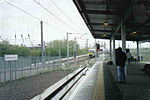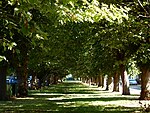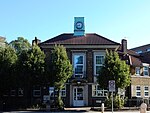London Terminal Control Centre
The London Terminal Control Centre (LTCC) was an air traffic control centre based in West Drayton, in the London Borough of Hillingdon, England, approximately 2.5 miles (4.0 km) north of London Heathrow Airport. Operated by National Air Traffic Services (NATS) it provided air traffic control services to aircraft arriving and departing from six London airports, one Royal Air Force station, plus en-route services to other aircraft that entered its airspace. Internally within NATS it is usually known by the initials TC. The civilian part of the West Drayton site closed in November 2007, when its functions moved to Swanwick, Hampshire. 'TC' and 'AC' (London Area Control Centre) remain separate organisations but now share the same site. Unlike New York TRACON, LTCC uses Class A airspace. Therefore, VFR operation is prohibited.
Excerpt from the Wikipedia article London Terminal Control Centre (License: CC BY-SA 3.0, Authors).London Terminal Control Centre
Evergreen Drive, London West Drayton (London Borough of Hillingdon)
Geographical coordinates (GPS) Address Nearby Places Show on map
Geographical coordinates (GPS)
| Latitude | Longitude |
|---|---|
| N 51.5053 ° | E -0.46 ° |
Address
Evergreen Drive
Evergreen Drive
UB7 9GQ London, West Drayton (London Borough of Hillingdon, Drayton Garden Village)
England, United Kingdom
Open on Google Maps







